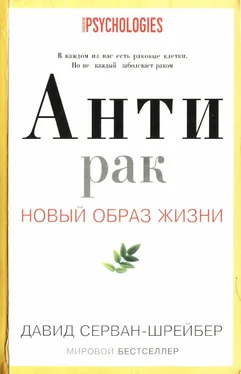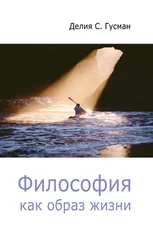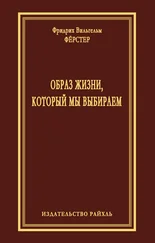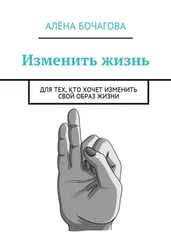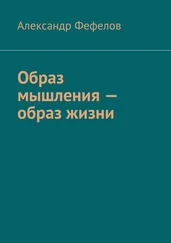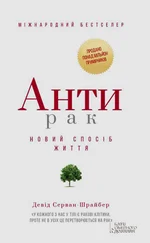Давид Серван-Шрейбер - Антирак. Новый образ жизни
Здесь есть возможность читать онлайн «Давид Серван-Шрейбер - Антирак. Новый образ жизни» — ознакомительный отрывок электронной книги совершенно бесплатно, а после прочтения отрывка купить полную версию. В некоторых случаях можно слушать аудио, скачать через торрент в формате fb2 и присутствует краткое содержание. Город: Москва, Год выпуска: 2010, ISBN: 2010, Издательство: РИПОЛ классик, Жанр: sci_medicine_alternative, Психология, на русском языке. Описание произведения, (предисловие) а так же отзывы посетителей доступны на портале библиотеки ЛибКат.
- Название:Антирак. Новый образ жизни
- Автор:
- Издательство:РИПОЛ классик
- Жанр:
- Год:2010
- Город:Москва
- ISBN:978-5-386-02111-5
- Рейтинг книги:4.26 / 5. Голосов: 34
-
Избранное:Добавить в избранное
- Отзывы:
-
Ваша оценка:
- 80
- 1
- 2
- 3
- 4
- 5
Антирак. Новый образ жизни: краткое содержание, описание и аннотация
Предлагаем к чтению аннотацию, описание, краткое содержание или предисловие (зависит от того, что написал сам автор книги «Антирак. Новый образ жизни»). Если вы не нашли необходимую информацию о книге — напишите в комментариях, мы постараемся отыскать её.
Антирак. Новый образ жизни — читать онлайн ознакомительный отрывок
Ниже представлен текст книги, разбитый по страницам. Система сохранения места последней прочитанной страницы, позволяет с удобством читать онлайн бесплатно книгу «Антирак. Новый образ жизни», без необходимости каждый раз заново искать на чём Вы остановились. Поставьте закладку, и сможете в любой момент перейти на страницу, на которой закончили чтение.
Интервал:
Закладка:
3. Surveillance Epidemiology and End Results (SEER). Cancer incidence public use database, 2006; see http://seer.cancer.gov/.
4. McGrath, K. G., “An Earlier Age of Breast Cancer Diagnosis Related to More Frequent Use of Antiperspirants/Deodorants and Underarm Shaving,” European Journal of Cancer Prevention 12, no. 6 (2003): 479-85.
5. Steliarova-Foucher, E., C. Stiller, P. Kaatsch, et al., “Geographical Patterns and Time Trends of Cancer Incidence and Survival Among Children and Adolescents in Europe Since the 1970s (the ACCIS Project): An Epidemiological Study,” Lancet 364, no. 9451 (2004): 2097-2105.
6. Post, P. N., D. Stockton, T. W. Davies, et al., “Striking Increase in Incidence of Prostate Cancer in Men Aged <60 Years Without Improvement in Prognosis,” British Journal of Cancer 79, no. 1 (1999): 13-17.
7. Institut de Veille Sanitaire, “Estimations Nationales.”
8. Ries, L. A. G., M. P. Eisner, C. L. Kosary, et al., “SEER Cancer Statistics Review 1975-2001,” National Cancer Institute, Bethesda, MD, 2004.
9. Institut de Veille Sanitaire, “Estimations Nationales.”
10. Ries, Eisner, Kosary, et al., “SEER Cancer Statistics Review 1975-2001.”
11. Ferlay, J., F. Bray, P. Piesci, et al., eds., WHO International Agency for Research on Cancer (IARC), IARC Cancer Epidemiology Database, Globocan 2000, Cancer Incidence, Mortality and Prevalence Worldwide (Lyon, France: IARC Press, 2000).
12. King, M-C., J. H. Marks, J. B. Mandell, et al., “Breast and Ovarian Cancer Risks Due to Inherited Mutations in BRCA1 and BRCA2,” Science 302, no. 5645 (2003): 643-46.
13. Institut de Veille Sanitaire, “Estimations Nationales.”
14. Rosenberg, C. E., The Cholera Years: The United States in 1832, 1849, and 1866 (Chicago, IL: University of Chicago Press, 1962).
15. Steingraber, S., Living Downstream: A Scientist’s Personal Investigation of Cancer and the Environment (New York: Vintage Books, 1998).
16. Davis, D., The Secret History of the War on Cancer (New York: Basic Books, 2007).
17. Waterhouse, J., C. Muir, K. Shamnugaratnam, et al., eds., Cancer Incidence in Five Continents, vol. IV (Lyon, France: IARC-W.H.O., 1982).
18. Sasco, A. J., “Migration and Cancer,” Revue de Médecine Interne 10, no. 4 (1989): 341-48.
19. Davis, The Secret History of the War on Cancer .
20. Waterhouse and Shamnugaratnam, Cancer Incidence in Five Continents.
21. Stewart, B. W., and P. Kleihues, eds., World Cancer Report (Lyon, France: W.H.O. IARC Press, 2003).
22. National Cancer Institute, Executive Summary of Cancer Etiology Think Tank (Bethesda, MD: National Cancer Institute, 2004).
23. Eaton, S. B., and M. Konner, “Paleolithic Nutrition: A Consideration of Its Nature and Current Implications,” New England Journal of Medicine 312, no. 5 (1985): 283-89.
24. Cordain, L., S. Eaton, A. Sebastian, et al., “Origins and Evolution of the Western Diet: Health Implications for the 21st Century,” American Journal of Clinical Nutrition 81, no. 2 (2005): 341-54.
25. Ibid.
26. Grothey, A., W. Voigt, C. Schober, et al., “The Role of Insulin-Like Growth Factor I and Its Receptor in Cell Growth, Transformation, Apoptosis, and Chemoresis tance in Solid Tumors,” Journal of Cancer Research & Clinical Oncology 125, no. 3-4 (1999): 166-73.
27. Long, L., R. Navab, and P. Brodt, “Regulation of the Mr 72,000 Type IV Collagenase by the Type I Insulin-Like Growth Factor Receptor,” Cancer Research 58m, no. 15 (1998): 3243-47.
28. Dunn, S. E., R. A. Hardman, F. W. Kari, et al., “Insulin-Like Growth Factor 1 (IGF-1) Alters Drug Sensitivity of HBL 100 Human Breast Cancer Cells by Inhibition of Apoptosis Induced by Diverse Anticancer Drugs,” Cancer Research 57, no. 13 (1997): 2687-93.
29. Cordain, L., S. Lindeberg, M. Hurtado, et al., “Acne Vulgaris: A Disease of Western Civilization,” Archives of Dermatology 138, no. 12 (2002): 1584-90.
30. Smith, R., N. Mann, A. Braue, et al., “The Effect of a Low Glycemic Load, High Protein Diet on Hormonal Markers of Acne,” Asia Pacific Journal of Clinical Nutrition 14 (supp.) (2005): S43.
31. Smith, R., N. Mann, A. Braue, et al., “Low Glycemic Load, High Protein Diet Lessens Facial Acne Severity,” Asia Pacific Journal of Clinical Nutrition 14 (supp.) (2005): S97.
32. Santisteban, G. A., J. T. Ely, E. E. Hamel, et al., “Glycemic Modulation of Tumor Tolerance in a Mouse Model of Breast Cancer,” Biochemical & Biopbysical Research Communications 132, no. 3 (1985): 1174-79.
33. Parkin, D., F. Bay, J. Ferlay, et al., “Global Cancer Statistics, 2002,” CA: A Cancer Journal for Clinicians 55 (2005): 74-108.
34. Weiderpass, E., G. Gridley, I. Persson, et al., “Risk of Endometrial and Breast Cancer in Patients with Diabetes Mellitus,” International Journal of Cancer 71, no. 3 (1997): 360-63.
35. Hankinson, S. E., W. C. Willett, G. A. Colditz, et al., “Circulating Concentrations of Insulin-Like Growth Factor-I and Risk of Breast Cancer,” Lancet 351, no. 9113 (1998): 1393-96.
36. Chan, J. M., M. J. Stampfer, E. Giovannucci, et al., “Plasma Insulin-Like Growth Factor-I and Prostate Cancer Risk: A Prospective Study,” Science 279, no. 5350 (1998): 563-66.
37. Chan, J. M., M. J. Stampfer, J. Ma, et al., “Insulin-Like Growth Factor-I (IGF-I) and IGF Binding Protein-3 as Predictors of Advanced-Stage Prostate Cancer,” Journal of the National Cancer Institute 94, no. 14 (2002): 1099-1106.
38. Michaud, D. S., S. Liu, E. Giovannucci, et al., “Dietary Sugar, Glycemic Load, and Pancreatic Cancer Risk in a Prospective Study,” Journal of the National Cancer Institute 94, no. 17 (2002): 1293-1300.
39. Michaud, D. S., C. S. Fuchs, S. Liu, et al., “Dietary Glycemic Load, Carbohydrate, Sugar, and Colorectal Cancer Risk in Men and Women,” Cancer Epidemiology, Biomarkers & Prevention 14, no. 1 (2005): 138-47.
40. Franceschi, S., L. Dal Maso, L. Augustin, et al., “Dietary Glycemic Load and Colorectal Cancer Risk,” Annals of Oncology 12, no. 2 (2001): 173-78.
41. Augustin, L. S. A., J. Polesel, C. Bosetti, et al., “Dietary Glycemic Index, Glycemic Load and Ovarian Cancer Risk: A Case-Control Study in Italy,” Annals of Oncology 14, no. 1 (2003): 78-84.
42. Gunter, M. J., et al., “Insulin, Insulin-Like Growth Factor-I, and Risk of Breast Cancer in Postmenopausal Women,” Journal of the National Cancer Institute 101 (2009): 48-60.
43. McMillan-Price, J., et al., “Comparison of 4 Diets of Varying Glycemic Load on Weight Loss and Cardiovascular Risk Reduction in Overweight and Obese Young Adults: A Randomized Controlled Trial,” Archives of Internal Medicine 166, no. 14 (2006): 1466-75.
44. Collectif LaNutrition.fr., Le Régime IG Minceur: comment perdre du poids en maîtrisant son sucre sanguin (Vergèze, France: Thierry Souccar Editions, 2007).
45. Heini, A. F., and R. L. Weinsier, “Divergent Trends in Obesity and Fat Intake Patterns: The American Paradox,” American Journal of Medicine 102, no. 3 (1997): 259-64.
46. Willett, W.C., “Dierary Fat Plays a Major Role in Obesity: No,” Obesity Reviews 3, no. 2 (2002): 59-68.
47. Weill, P., Tous Gros Demain? (Paris, France: Plon, 2007).
48. Ibid.
49. Ailhaud, G., and P. Guesnet, “Fatty Acid Composition of Fats Is an Early Determinant of Childhood Obesity: A Short Review and an Opinion,” Obesity Reviews 5, no. 1 (2004): 21-26.
50. Ailhaud, G., F. Massiera, P. Weill, et al., “Temporal Changes in Dietary Fats: Role of n-6 Polyunsaturated Fatty Acids in Excessive Adipose Tissue Development and Relationship to Obesity,” Progress in Lipid Research 45, no. 3 (2006): 203-36.
Читать дальшеИнтервал:
Закладка:
Похожие книги на «Антирак. Новый образ жизни»
Представляем Вашему вниманию похожие книги на «Антирак. Новый образ жизни» списком для выбора. Мы отобрали схожую по названию и смыслу литературу в надежде предоставить читателям больше вариантов отыскать новые, интересные, ещё непрочитанные произведения.
Обсуждение, отзывы о книге «Антирак. Новый образ жизни» и просто собственные мнения читателей. Оставьте ваши комментарии, напишите, что Вы думаете о произведении, его смысле или главных героях. Укажите что конкретно понравилось, а что нет, и почему Вы так считаете.
